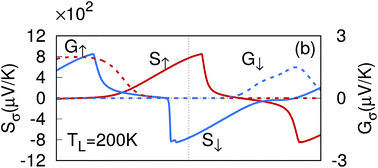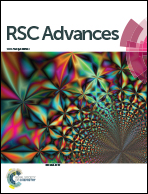Thermal spin current in zigzag silicene nanoribbons with sp2–sp3 edges
Abstract
Using first-principles calculations combined with non-equilibrium Green's function method, we study thermal spin transport of zigzag silicene nanoribbons (ZSiNRs) with unsymmetrical sp2–sp3 edges under a temperature gradient but no bias. Both in the linear and non-linear response regimes, we have opposite flow directions for different spins, which leads unambiguously to spin current. Most important is that pure spin current can be achieved and basically no tuning of the chemical potential μ is needed since the neutral point is very close to μ = 0 (the chemical potential located at the Fermi level) and this fact holds for a very large temperature range studied (110 ≤ TL ≤ 300 K). The direction of charge current induced by a temperature gradient can be easily reversed by tuning the chemical potential, while the spin current is almost unchanged in the same process, indicating that the spin current is robust and stable. In addition, both spin current and charge current present a thermoelectric diode behavior for TL ≤ 200 K in the nonlinear response regime. These findings suggest that the unsymmetrically sp2–sp3 terminated ZSiNRs are promising materials for spin caloritronic devices.



 Please wait while we load your content...
Please wait while we load your content...